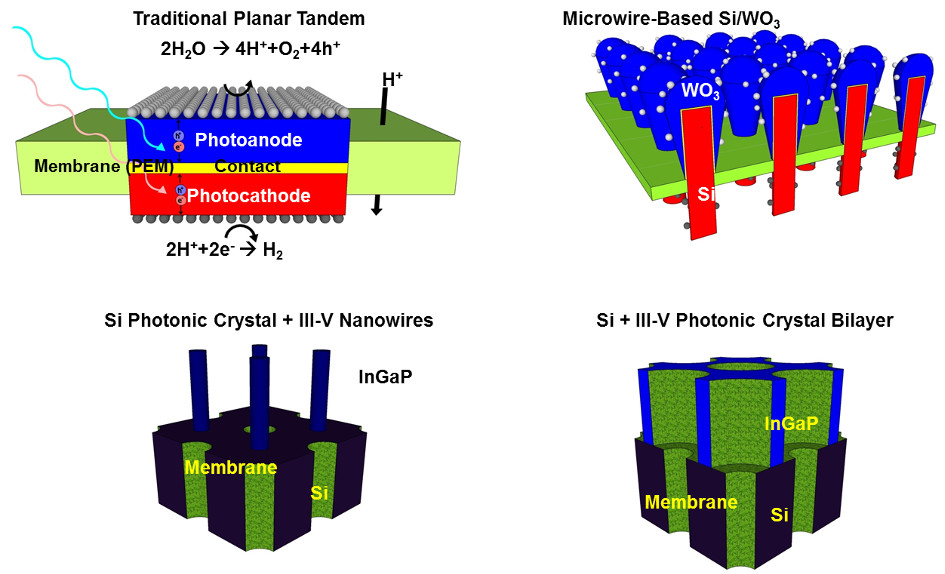Mesoscale Design
The mesoscale design project is a part of the larger effort of the Joint Center for Artificial Photosynthesis (JCAP) to develop an efficient, fully-integrated photoelectrochemical (PEC) device for the production of renewable fuels including hydrogen (near term) and hydrocarbons (long term). A complete PEC device requires the assembly of multiple components: photoactive semiconductors, cathodic and anodic catalysts, and an ion-conducting membrane. The mesoscale design project focuses on device design and, for a given set of components, aims to maximize the complete PEC device efficiency.
Mesoscale device design efforts focus on nano- and micro-structured designs due to the plethora of potential advantages, including (i) orthogonalization of the directions of light absorption and carrier collection, (ii) reduction of material usage, (iii) relaxation of lattice-matching constraint for epitaxial growth, (iv) light absorption enhancement via light trapping, (v) increased surface area for catalyst placement, (vi) minimization of solution IR drop, and (vii) monolithic device fabrication. The combination of experimental and theoretical work is used synergistically to study and optimize the phenomena of light absorption and transport of charge carriers, reactants, products and electrolytes, which are inherently coupled in a nano- or micro-structured device on the micron to centimeter length scales. Device designs being actively researched include (i) silicon microwire-based, tandem, monolithic structures coated in wide bandgap oxides, and (ii) III-V nanowire arrays grown on silicon photonic crystals.
Light Absorber Materials
TBD
